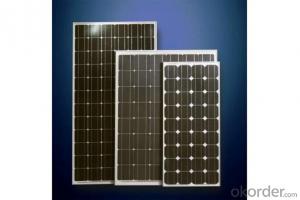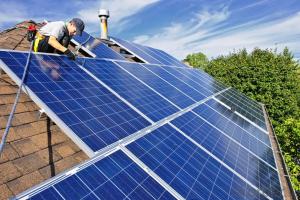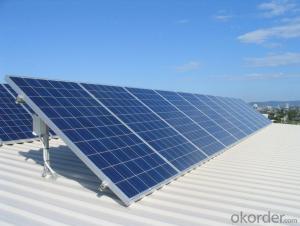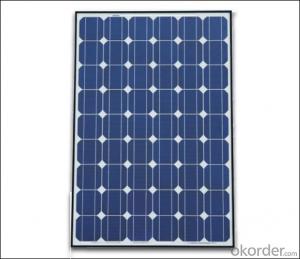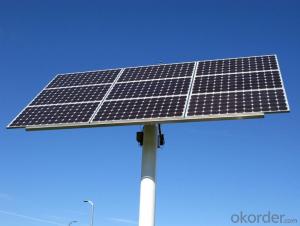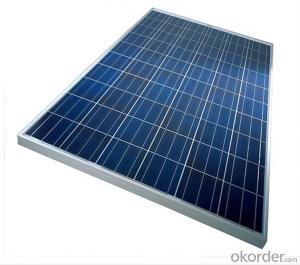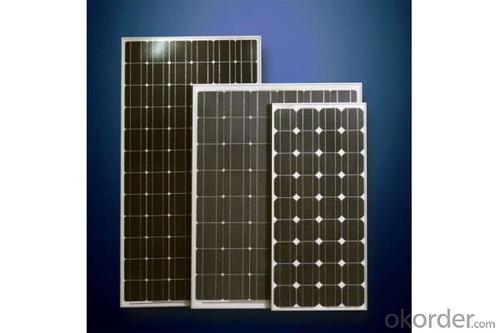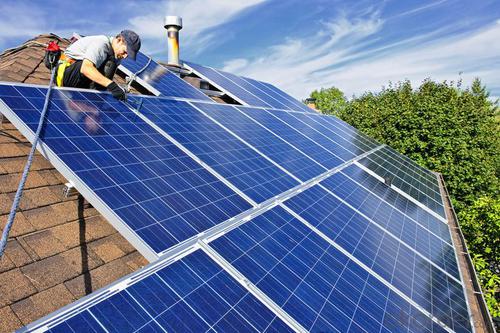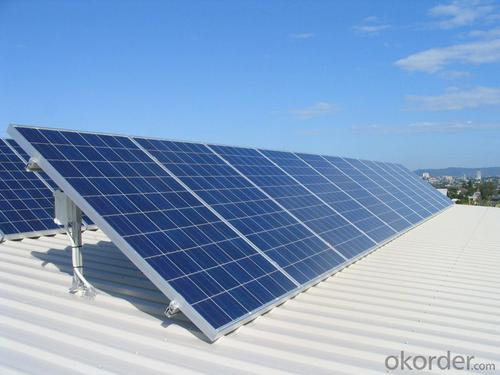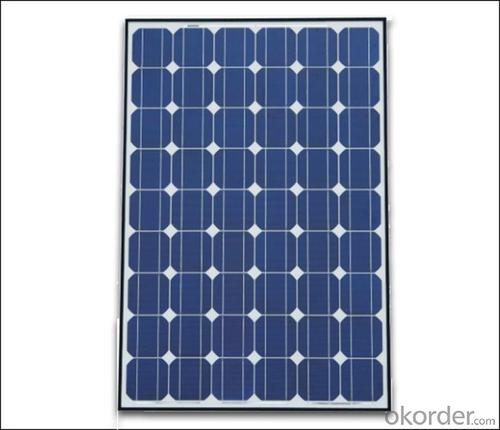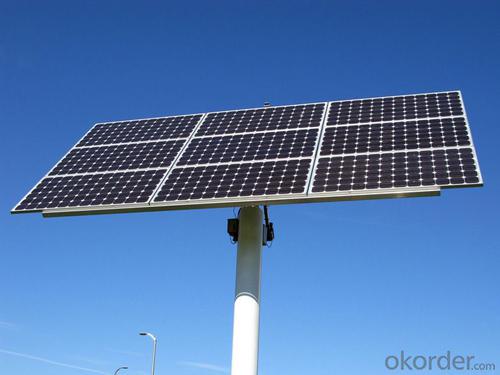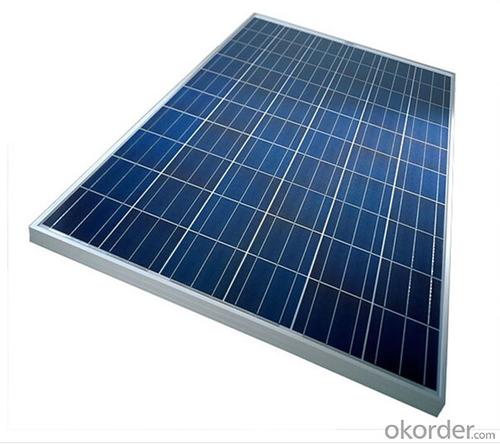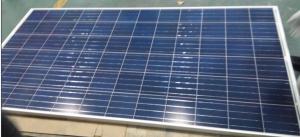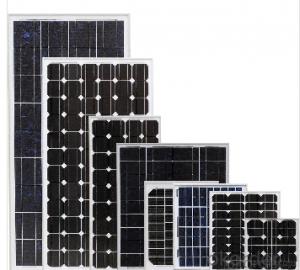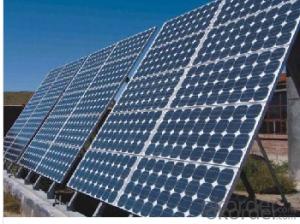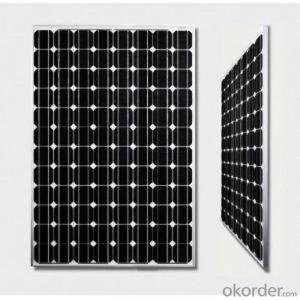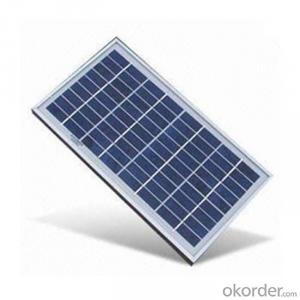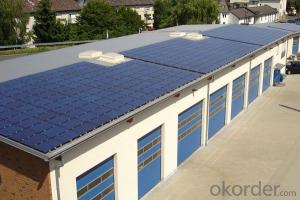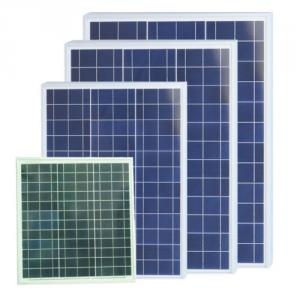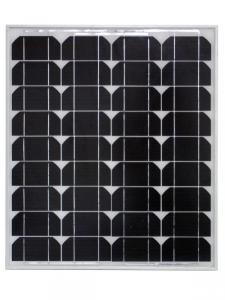220w Solar Panels That Follow The Sun - A Grade Manufacturers in China
- Loading Port:
- China main port
- Payment Terms:
- TT OR LC
- Min Order Qty:
- 10000 watt
- Supply Capability:
- 100000000 watt/month
OKorder Service Pledge
OKorder Financial Service
You Might Also Like
Specification
Description
High cell efficiency PV solar panel with quality silicon material for long term output stability and reliability.
Rigorous quality control to meet the highest international standards.
High transmittance, low iron tempered glass with enhanced stiffness and impact resistance.
Unique frame design with high mechanical strength for easy installation.
Advanced encapsulation material with multilayer sheet lamination to provide long-life and enhanced cell performance.
Outstanding electrical performance under high temperature and low irradiance conditions.
48 Back-Contact monocrystalline Si solar cells (approx. 18.35%).
Our Advantages
Long Service Life
2.High Efficiency Solar Cells
3.Special Aluminum Frame Design
4.High Transmission, Low Iron Tempered Glass
5.Advanced Cell Encapsulation .
Solar System characteristic:
1. All Systems have LCD digital display which allows you to see the system working, (eg) Charge data, System voltage, Daily power consumption and temperature.
2. All type of BPS system both has AC and DC output.
3. All system have automatic switch , If mains power goes off the system will switch automatically over to battery power, When mains power resumes
the system will switch back automatically. The batteries will resume recharging automatically.
4. All inverters are Pure Sine Wave inverters. This allows the use of Air Conditioners and refrigerators without any problem.
5. Each component has a single chip detector. Assembled by the IPM or IGBT of Mitsubishi
This protects the system from Overloads, Low Voltage and Under Voltage (alarm) Over Heating, Short circuit, Reverse Polarity.
Product details show
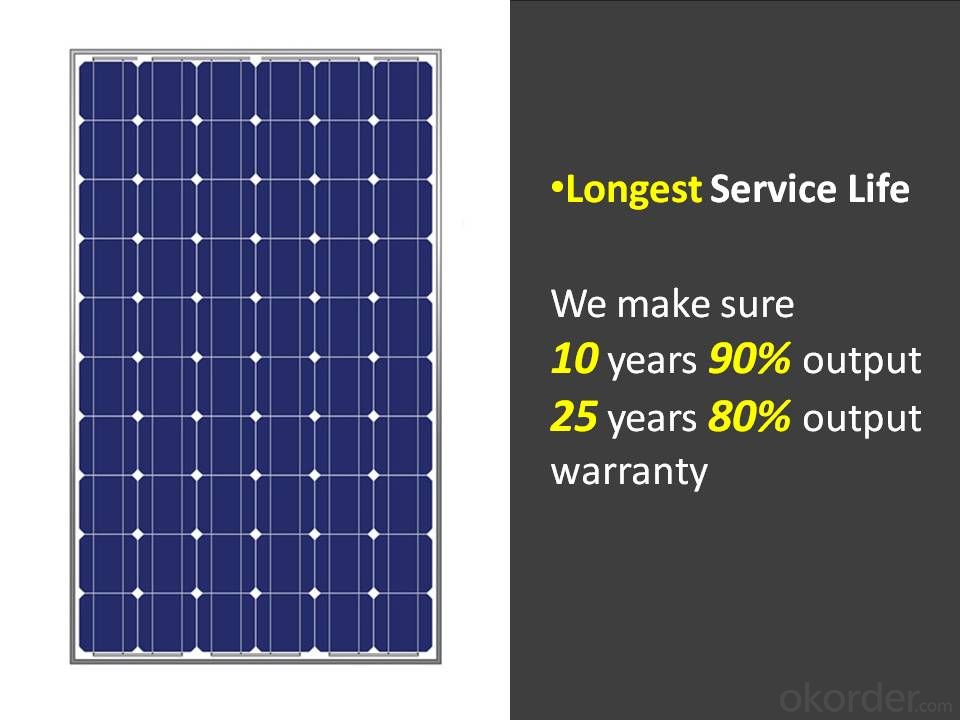
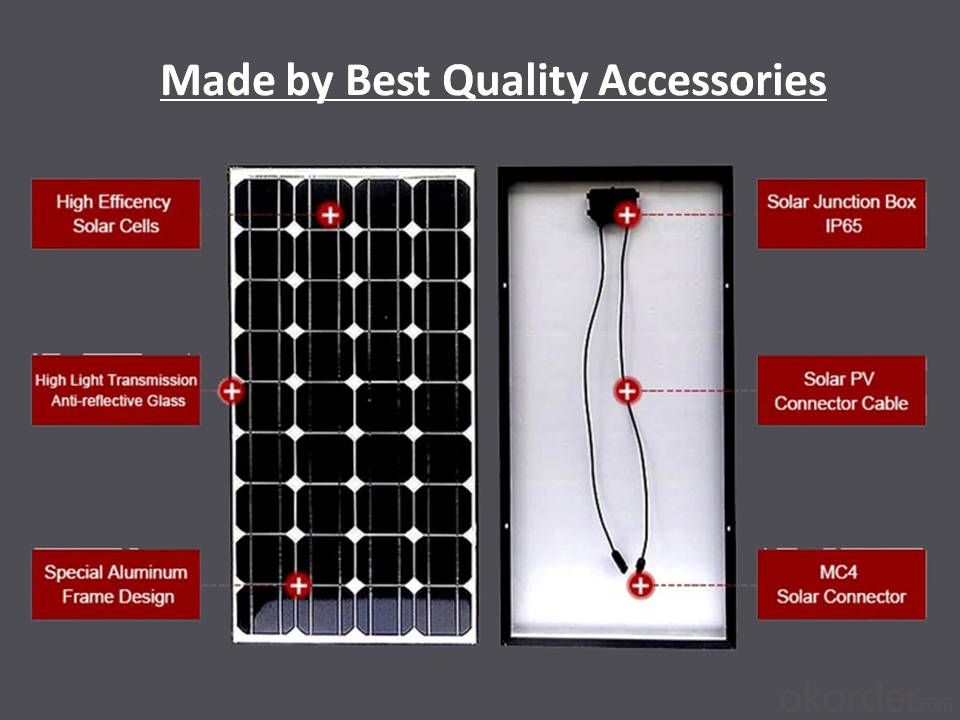
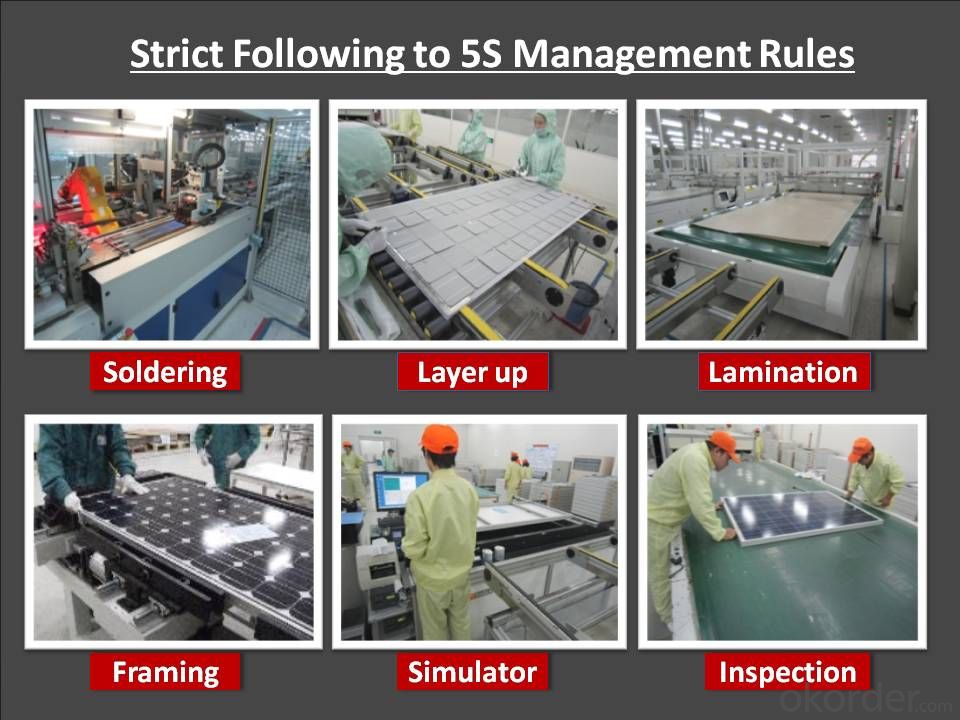
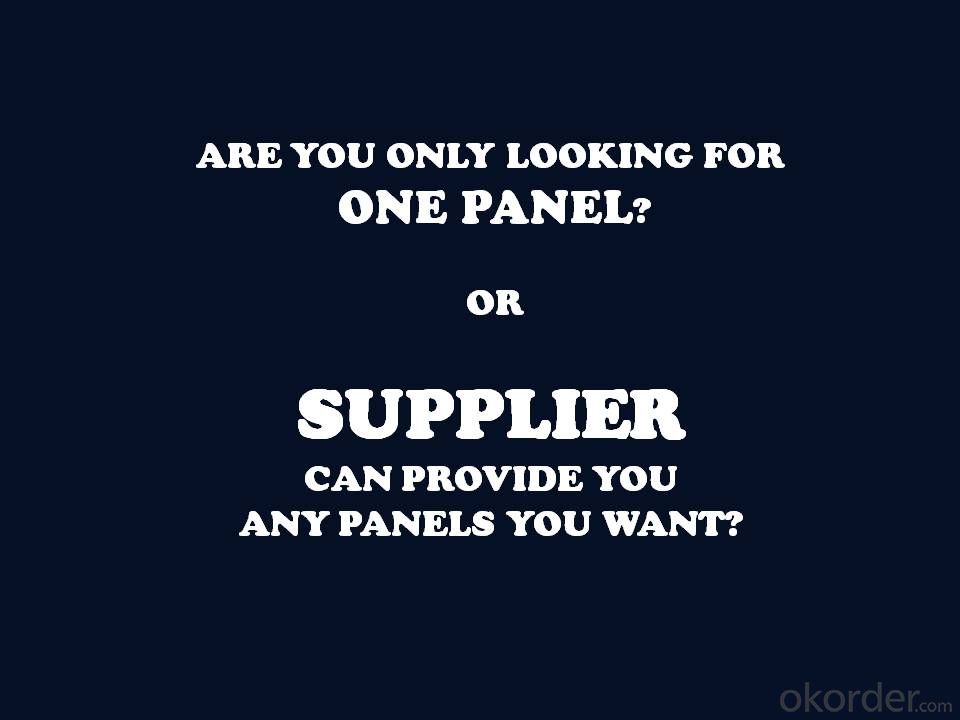
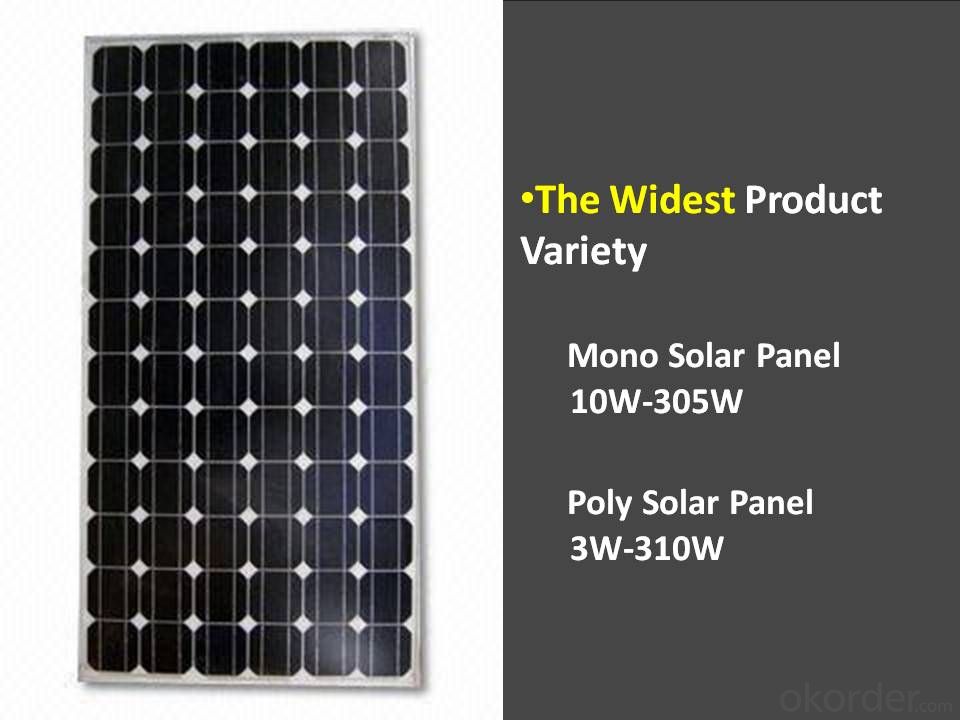
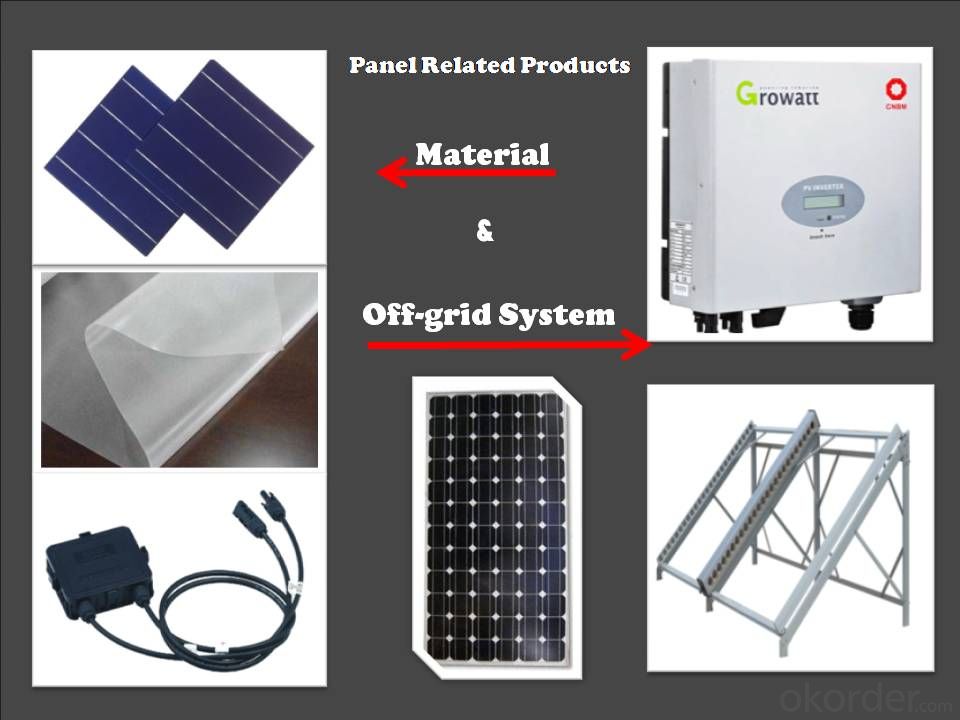
Our Service
1. We will reply with in 24 workingday hours.
2. The size and voltage of solar panels can be customized by customers' requirements.
3. Professional manufacturer. You are warmly welcomed to visit us!
4. We have a professional engineers team, we can answer your questions about our products.
5. Each step after many tests to ensure that the panel can work normally.
6. We will be offer a good discount for big amount.
- Q: Where can I find updated info about solar panels for home?
- Of the practical technologies, crystalline silicon is still king. There have been improvements in manufacturing efficiency and price, but the fundamental technology is unchanged. For the past couple decades, there have been startups claiming that they will have a breakthrough available in 2 years, but so far, nothing has beat crystalline silicon for general applications. The appeal of thin-film was its cost, at the penalty of efficiency, but when the prices of crystalline plummeted, the cost argument went away. That wasn't the only problem Solyndra had, but it contributed to the company's demise. Organic solar cells show promise, and might ultimately be very cheap to manufacture, as they don't involve the high-temperature processing that semiconductors do. The main problem today is that they're not stable at the temperature of a hot roof. But then again, a few years ago, organic LEDs were the same way, and now they're commonplace in big TV's. Only time will tell. From a homeowner's standpoint, the install is routine, but still best done by professionals. It's like putting a new roof on a house, or wiring in central air conditioning. For most, it's better to call a pro.
- Q: Can anyone give me a link to a website that sells really big solar panels? Enough to run a small cafe on entirely solar power.
- I cannot offer a source of info, but... Solar power is great, but not ideal (yet). Currently, one-story buildings that have a rooftop totally made up of solar panels can only get about % of the power needed by that means. Additional panels will be needed.
- Q: Can solar panels be used for powering public transportation?
- Yes, solar panels can be used for powering public transportation. Solar-powered buses and trains are already in use in various cities around the world. These panels capture sunlight and convert it into electricity, which can be used to power the vehicles' motors, lighting, and other systems. This renewable energy source helps reduce carbon emissions and dependence on fossil fuels in the transportation sector.
- Q: How much solar energy does a 2m by a 3m solar panel convert to energy on a sunny day? Assume that the solar cells are 30% efficient.I'm not looking for the answer so much as I need an explanation o how to solve this type of problem... Thanks!!
- You have the area of the solar panel. You know their efficiency. What you need to know now is the energy (per area) delivered by the sun. The energy delivered by the sun can be found on the internet. Earth ,43 – ,32 W/m? (wikipedia) That is offcourse for your solar panels perpendicular to the ray's of the sun. If they are under an angle you should see what the area of the projecton of your solar panel is on a plane perpendicular to the ray's of the sun. So know you have the intensity W/m? and an area (or effective area). Here you go the energy deliverd by the sun. And 30% of it is what you get out of your panels.
- Q: I want to be more green and if I get the panels will I still have a regular electric bill?
- The most cost-effective solution, which the vast majority of new installs use today, is solar alongside the regular power company. That way, you need no batteries, and if the solar array isn't producing enough at any given time, you draw from the electric company. When the array is producing more than you need, instead of just throwing that power away, the power company buys it (usually). In short, yes, you will still have an electric bill, but a smaller one. On our house, the electric bill was a little less than $5 a month, with an end-of-year settlement of an additional $2. How much does it cost? Unfortunately, that's like asking how much personal transportation costs. Some people need a van to transport the kids to soccer, some may get by with a motorcycle, others may need only a bicycle. The best thing is to contact a professional installer to get a quote based on your location and electrical usage. Solar electric does not make financial sense in all areas. Our array cost $2,000 but don't use that as a guide. Yours might be 0 times that, or half that, depending on your area and needs.
- Q: Can solar panels be used to power streetlights or outdoor lighting?
- Yes, solar panels can be used to power streetlights or outdoor lighting. Solar-powered streetlights or outdoor lighting systems consist of solar panels that capture sunlight and convert it into electricity, which is stored in batteries. This stored energy is then used to power the streetlights or outdoor lighting during the night or when there is insufficient sunlight. Solar-powered streetlights offer a sustainable and cost-effective solution for outdoor lighting, reducing energy consumption and carbon emissions.
- Q: Is it possible for the everyday person to increase the efficiency of solar panels that they own? If so, how is it done?
- There are 3 (simple) ways to increase the efficiency of a solar panel at home - they all work by increasing the amount of light that falls onto it: . Have the solar panel track the sun throughout the day so that it always faces it; 2. Place a lens (larger than the panel) in front of the panel that focuses the light from the sun onto it. 3. Have mirrors around the panel than redirect light from themselves onto the solar panel. (e.g. imagine a satellite dish with the solar panel at the front and the dish being all mirrored.)
- Q: There is a charge controller that has what i believe to be only port for a solar/ wind turbine control panel and i don't know if it has more than port for panels. So would i be abed to link 2 panels to port or do you think the controller has more than portBTW it is for marine use.
- Solar panels are like batteries, hook them up in series and you increased the voltage, hook them up in parallel and you increased the current. You should review your first year physics notes on the matter.
- Q: I live in the UK, I have no savings (so would have to take out a loan of about ?8000), I don't know how long I plan to stay in my house, I might want to move in a year or two to take advantage of a better job so I want to keep the option open of being able to sell my house without having to pay off the cost of having the panels fitted (which I probably won't get back on the increased value they add to my house).What are the main advantages of having solar panels?What are the pitfalls the ever so eager cold callers with quotas to fill don't tell you about?Basically is it worth having them?Thankyou.
- If you're talking about photovoltaic panels, for making electricity, they're very expensive. Around here I think it runs around 2 bucks a watt of capacity, just for the panels. Then they have to be installed of course, which means an electrician has to be paid, and you need an inverter also. You can also spring for a bank of deep cycle batteries if you want to be able to store the electricity from the panels to use at night or on cloudy days, but that adds another very large expense. Now if electricity is very, very expensive where you are, you could maybe pay this off in a few years, but I doubt you could pay off 8000 pounds worth of this stuff in only a couple years. If you're talking about solar for water or air heating, well, that's another deal. But those kind of setups cost a lot less to put in, I can't see anyone paying that much for it.
Send your message to us
220w Solar Panels That Follow The Sun - A Grade Manufacturers in China
- Loading Port:
- China main port
- Payment Terms:
- TT OR LC
- Min Order Qty:
- 10000 watt
- Supply Capability:
- 100000000 watt/month
OKorder Service Pledge
OKorder Financial Service
Similar products
Hot products
Hot Searches
